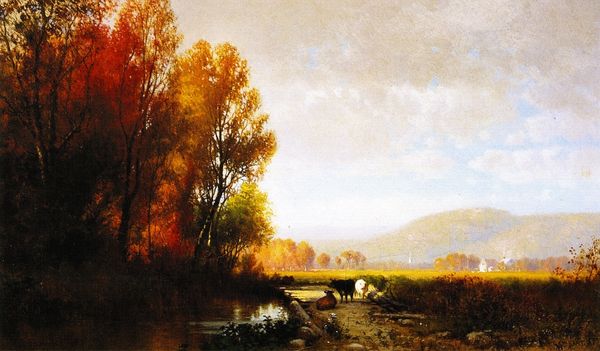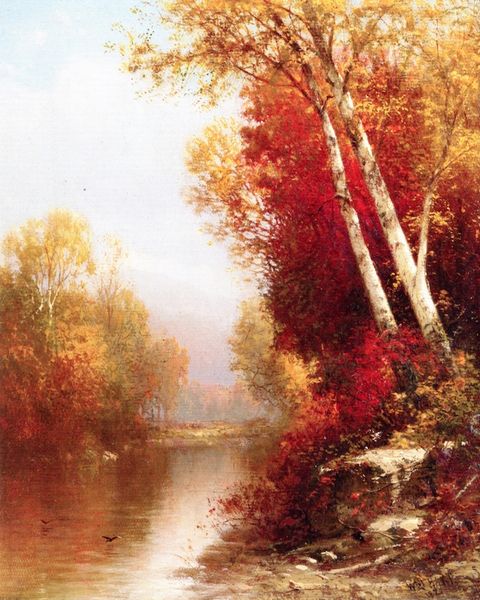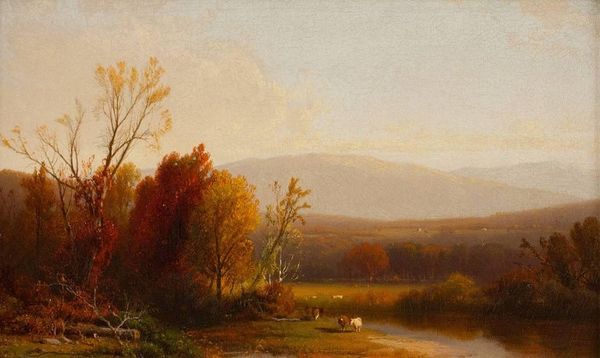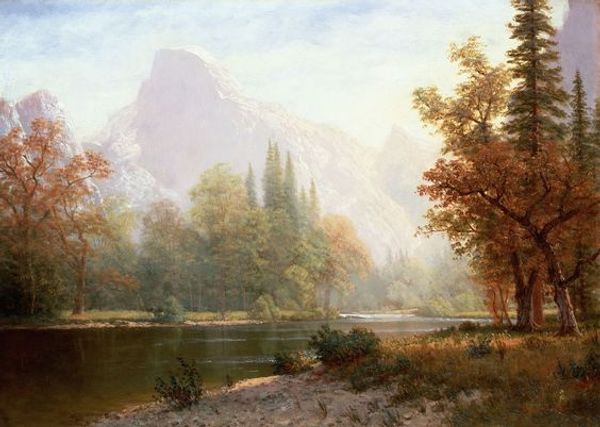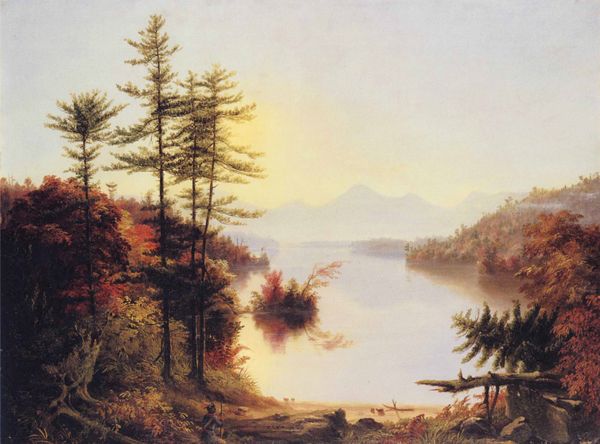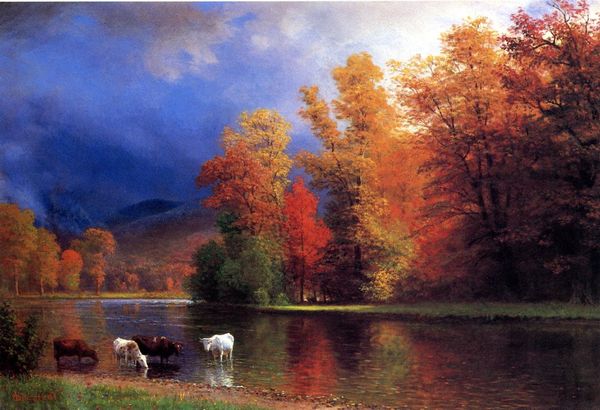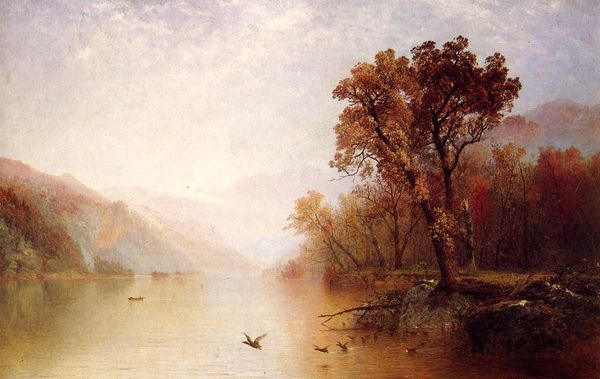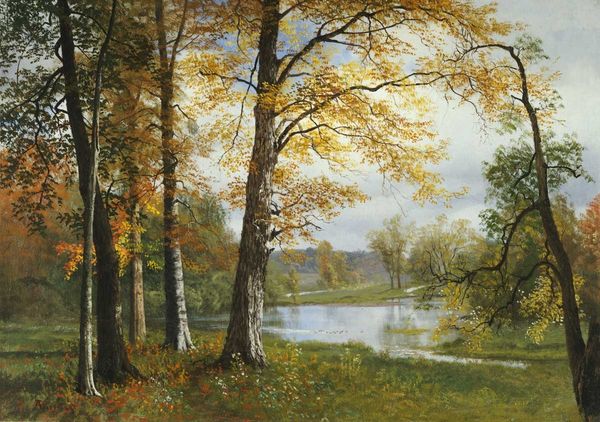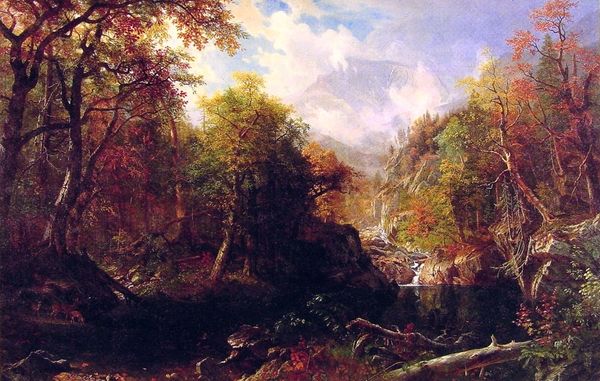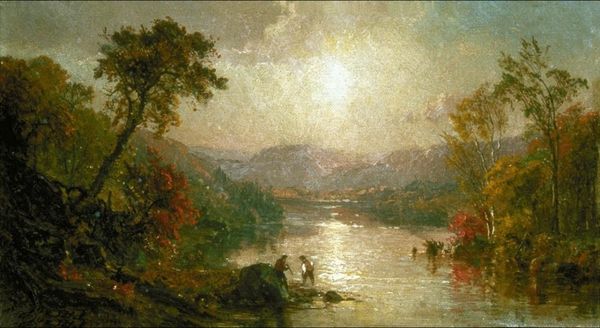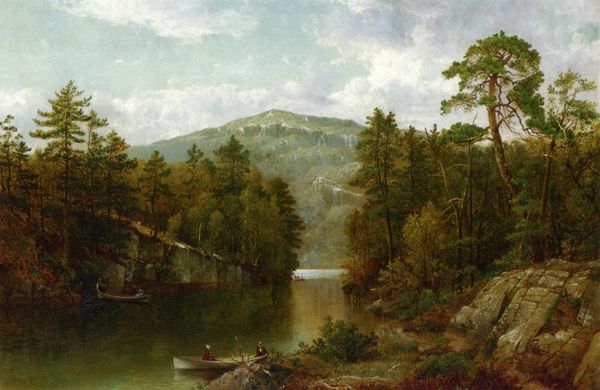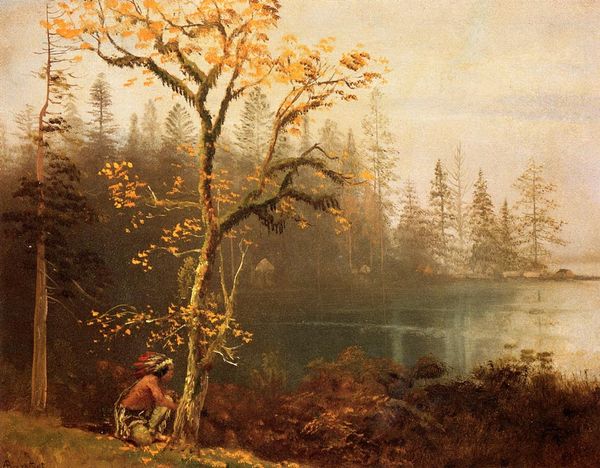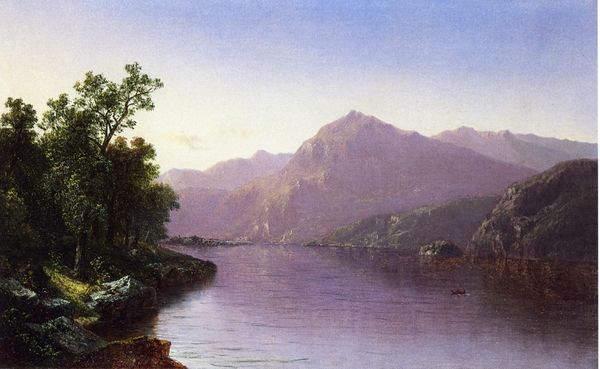
Copyright: Public domain
Curator: Here we have William Hart's "Autumn on the Lake" from 1877, an oil painting exemplifying the Hudson River School's romantic style. Editor: What strikes me first is the overwhelming warmth. The painting just glows with golds and russets, almost like a hazy memory. You can practically feel the crispness in the air. I'm really interested in the paint itself: how thick or thin is it? Curator: The Hudson River School sought to capture the spiritual essence of the American landscape. In "Autumn on the Lake," Hart uses the seasonal transition as a symbolic representation of mortality and reflection. Notice the mirrored effect of the lake as symbolic of self-awareness and introspection. Editor: And it's clear he was working 'en plein air,' but did he mix these colors himself? The intensity of the oranges is interesting and how carefully he renders reflections – this requires some preparation of both materials and vision. We should really look into how he sourced his pigments. Curator: Indeed. Hart masterfully uses light to create a sense of the sublime, common with the Romanticism style. This use of dramatic light stirs within the viewer a sense of awe. You can also see how this work represents an interesting dialogue with transcendentalism as it renders the natural landscape with the hand of God and nature in equal part. Editor: Thinking about its production, it’s difficult to imagine Hart carrying all his materials out there – easel, canvases, paints, solvents. How large was his studio? What other preparatory works did he engage in to prepare to make these works on site? Those golden pigments must've been quite precious as well. I'm also curious about what kinds of brushes he employed to get that blended effect. Curator: This work asks us to contemplate our place in the grand scheme of the natural world. It really taps into this enduring connection to the rhythms of the Earth that speak across generations, reminding us of beauty but also fragility. Editor: Looking closer now, it makes me think more deeply about landscape painting as a material engagement with a specific place and a specific time. And ultimately as the transformation of natural resources, such as the pigments, into cultural artifacts. It encourages me to investigate these landscapes and how they change through processes like the work done here on the painting but equally to natural events, climate and development.
Comments
No comments
Be the first to comment and join the conversation on the ultimate creative platform.
